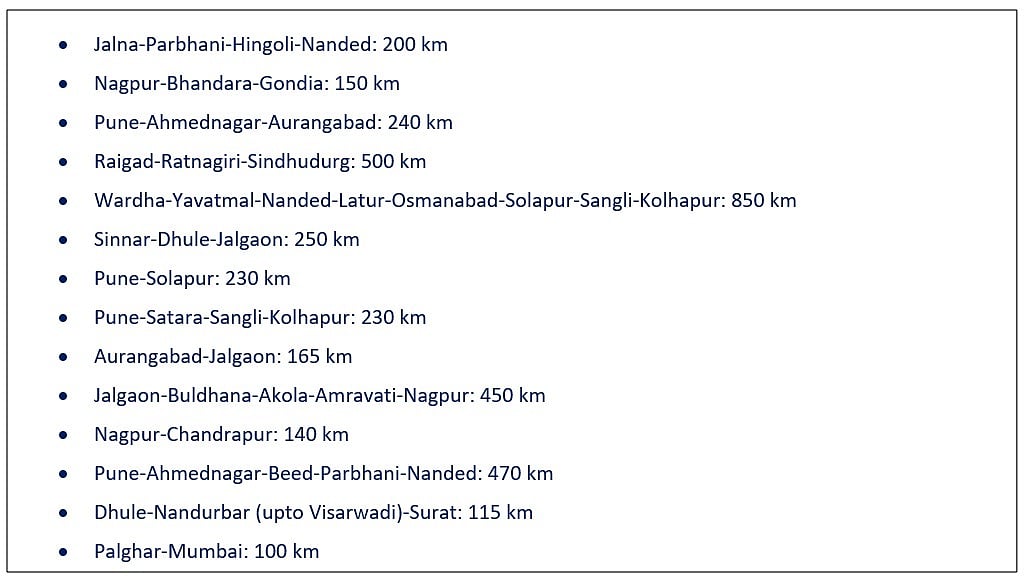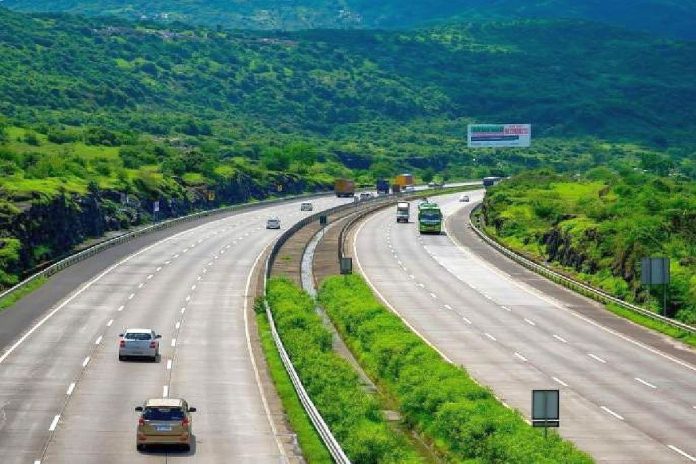Snapshot
-
The 701-km, six-lane access-controlled road will reduce the travel time between Nagpur and Mumbai to seven hours.
After a long lull, Maharashtra is trying to catch up on infra development.
Prime Minister, Narendra Modi will inaugurate the second expressway of the state, namely, the Mumbai-Nagpur Samruddhi Expressway in Nagpur on 11 December.
Officially named ‘Hindu Hrudaysamrat Balasaheb Thackeray Maharashtra Samruddhi Mahamarg’, it is also known as the Mumbai-Nagpur Super Communication Expressway.
The 701-km, six-lane access-controlled road will reduce the travel time between Nagpur and Mumbai to seven hours.
At present, commuters use NH 3 (Mumbai-Dhule) and NH 6 (Dhule-Nagpur) to reach Nagpur covering 839-km distance which takes at least 17 hours.
In the first phase of the project, the 520-km-long stretch between Nagpur and Shirdi, will be inaugurated.
The remaining 181-km stretch under phase 2, between Shirdi and Mumbai, will end in Thane’s Vadpe area in the Bhiwandi district, and will be ready by 2024.
The project being implemented by the Maharashtra State Road Development Corporation (MSRDC) will be the fastest in the country — where vehicles can ply at a top speed of 150 kmph.
Sluggish Pace
The first expressway in the state, Mumbai-Pune Expressway, connecting the bustling metropolis of Mumbai with the industrial and cultural centre of Pune was fully operationalised in 2002.
Notably, this was also the first expressway in India. Since then, it has taken almost 20 years to construct the second expressway in the state which is the biggest economy within India in terms of gross state domestic product (GSDP).
Even the Samruddhi corridor has faced massive delays. The expressway which is a pet project of Deputy Chief Minister Devendra Fadnavis, was initiated during his tenure as Chief Minister of the state between 2014 and 2019.
The project which hit the ground in 2019, was scheduled to be completed in 2021 and later by September 2022. However, it was delayed due to the Covid-19 pandemic and the land acquisition hurdles.
‘Expressweb’ In Uttar Pradesh
Currently, Maharashtra has a total of 17,725 km of National Highways (NH), 32,423 km of State Highways (SH), but only 94 km of expressway between Mumbai-Pune.
With opening of the first phase of the Samruddhi corridor, the state will have a 614-km-long operational expressway network.
Contrast this with Uttar Pradesh, which has emerged as the expressway capital of the country and boasts of 13 expressways spanning 3,200 km, otherwise known for its abysmal infrastructure.
Uttar Pradesh, the fourth largest state in the country, until not so long ago, was known for its pot-holed roads that made one break the journey instead of completing it.
While six expressways in the state are already operational, seven expressways are under various stages of construction.
While the Yamuna expressway, which came up in 2012, and the Agra-Lucknow Expressway that opened to public in 2018 started the trend, it is the three new expressways: the Purvanchal, Bundelkhand and the Ganga expressways that are scripting a silent transformation in the state.
The 340-km-long Purvanchal Expressway was operationalised in 2021, the 296-km-long Bundelkhand Expressway on 16 July 2022 and the 594-km-long Ganga Expressway will be ready by the next Kumbh in 2025.
Waking Up To Reality
The Maharashtra government is finally waking up to the immense benefits of the expressway-led development in the state.
As a first step, the MSRDC has floated a tender for the appointment of consultant for the preparation of feasibility study report, detailed project report (DPR) and land acquisition requirements for two greenfield expressways, namely Pune-Nashik Industrial Expressway, and Pavnar-Patradevi (Nagpur-Goa Shaktipeeth Expressway).
The 180-km Pune-Nashik expressway is envisaged to connect new and old industrial zones and townships.
It will also complete the remaining route among the rapidly developing ‘Golden Triangle’ region lying in between Mumbai, Nashik and Pune.
Similarly, the 750 km Nagpur-Goa Shaktipeeth Highway will connect major religious centres such as Mahur, Ambajogai, Aundha Nagnath, Parali, Tuljapur, Pandharpur, Narsobachi Wadi and Kolhapur.
What Next
In a major push to the expressways in the state, the MSRDC has embarked on an ambitious project to create a grid of 14 expressways (see image below) adding up to more than 4,100 km.

To create this grand network, the infrastructure arm of the state government has authorised pre-feasibility survey and preparation of DPR for these projects.
The project report will ascertain the total capital expenditure needed to create the grand network and the finance options that can be tapped.
Grand Vision
The grand network of expressways has been framed based on the idea of bringing any destination in the state within a distance of eight to nine hours.
As part of this, the government has planned to connect all 36 districts of Maharashtra, over the next two decades, through 5,000 km of access control expressways.
Further, plans are afoot to build expressways connecting Nagpur to Hyderabad and Nagpur to Delhi, with the help of the central government.
Besides improving connectivity between regions, such grand infrastructure projects spur economic activity. They also help create more urban and semi-urban centres, thereby creating employment opportunities.
Take for example, the Samruddhi corridor, built at a cost of Rs 55,335 crore, runs across 10 districts and is expected to directly impact about 36 per cent of the state population.
Once operational, the corridor is expected to boost development opportunities in the drought-prone Marathwada and Vidarbha regions.
“The Mumbai-Nagpur Samruddhi Expressway will change the face of Vidarbha. It will become the next economic corridor of the country,” said Fadnavis.
“Expressways like the Samruddhi open up vistas of real estate development including townships, as also ‘sunrise sectors’ like logistics and data centres,” he added.


